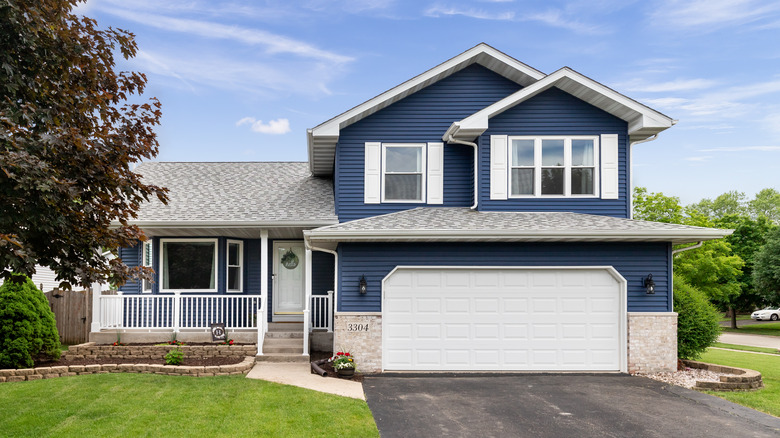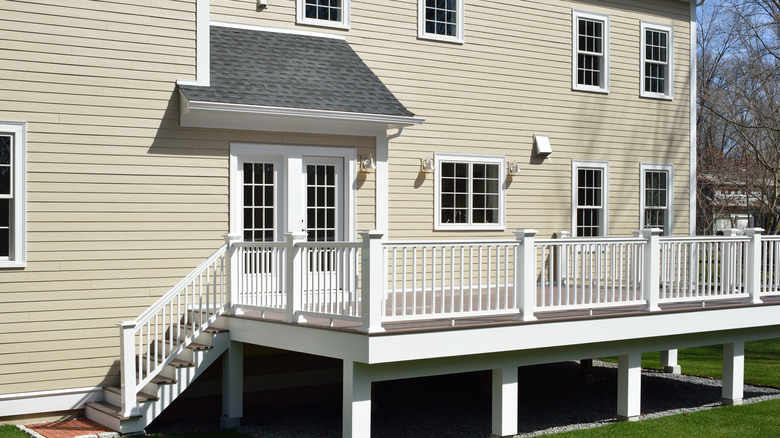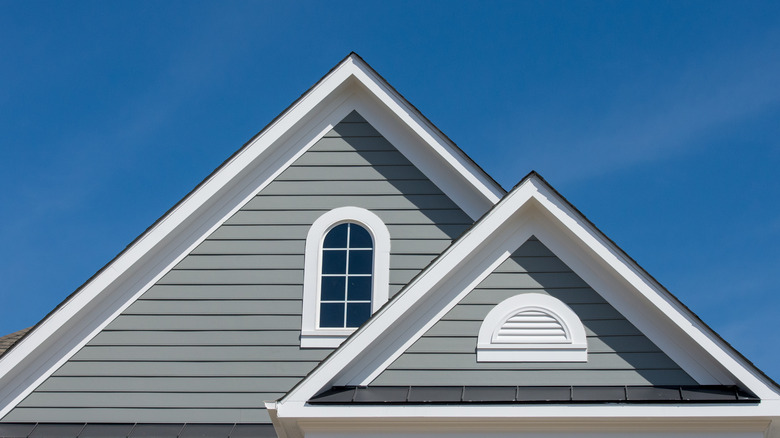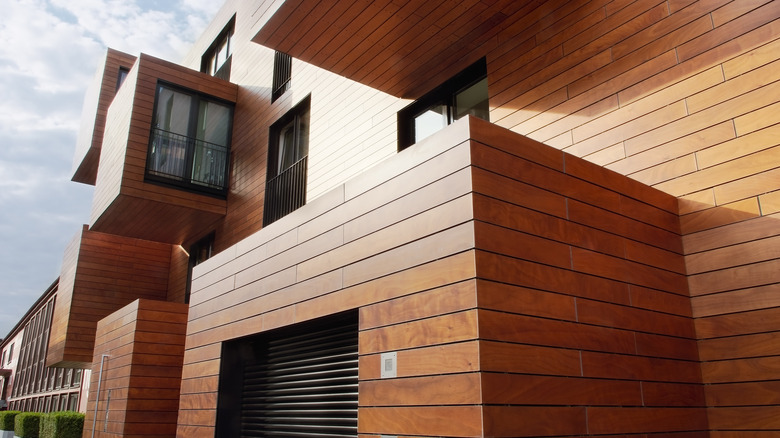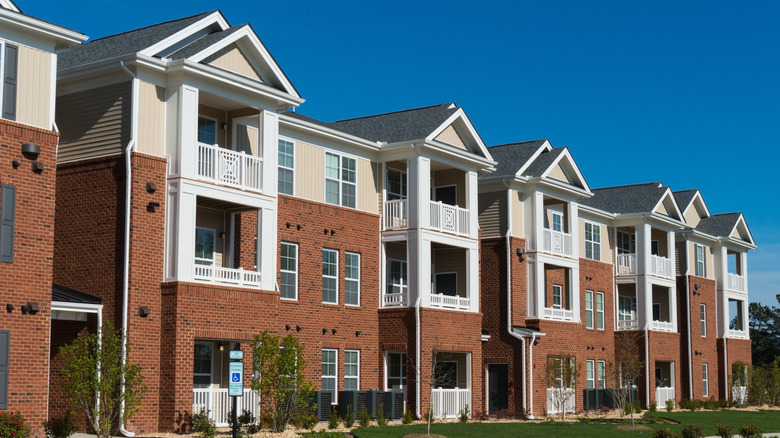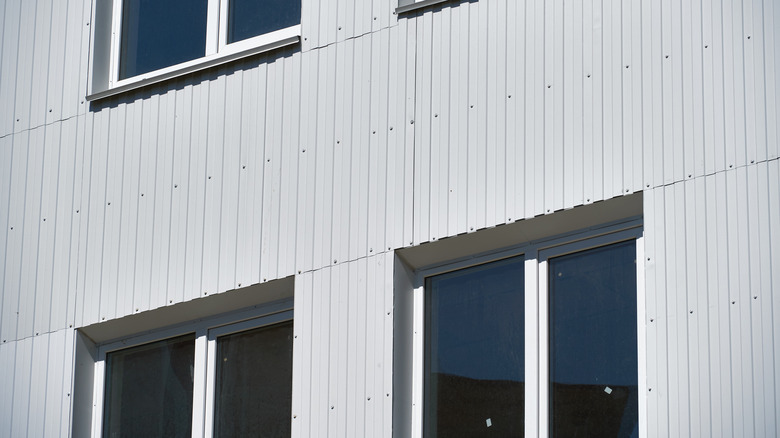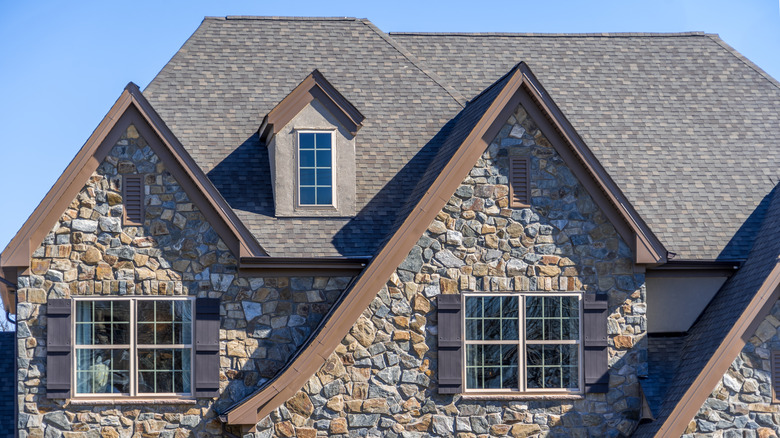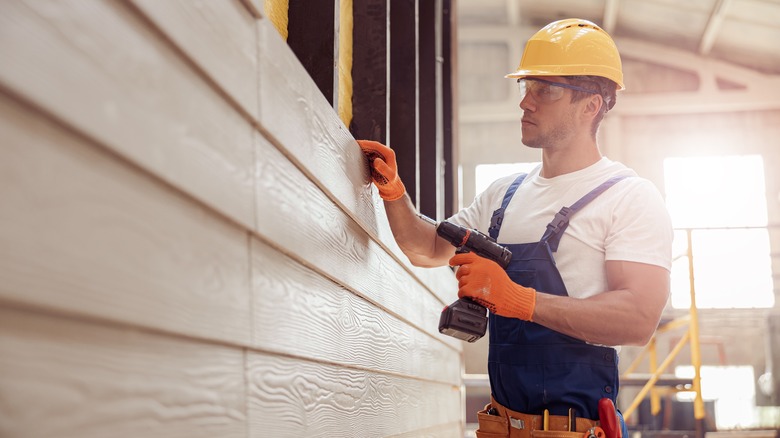What Are The Different Types Of House Siding To Consider?
Houses have many functions from providing shelter to giving us a place to cook, eat, wash, and sleep. Because we rely on our homes for so much, we need them to be structurally sound. House siding, which works in tandem with the roof, forms the first line of protection for the building from all of the possible elements. Siding can significantly improve the strength, value, and appeal of your home. Modernize adds that when insulated, it also helps you save energy.
When choosing a type of siding, think about the durability, weather resistance, energy efficiency, cost, and of course, aesthetics. Are you looking to beautify your home? Wood siding is a great choice. Is durability more important? Consider stone siding. Modernize points to the advances in vinyl and veneer siding as one reason to replace your siding soon. These options provide good quality and looks, while also being cost-effective. This article will assist you as you decide on the best siding for your home.
Vinyl siding
Vinyl siding came about in the 1950s as a better alternative to aluminum and wood materials. It has since become the safe choice for American homeowners, where it can be found on more than 30% of houses (via Modernize). Vinyl is one of the most familiar and low-maintenance siding types and is also one of the favorites due to its affordable installation costs. Forbes adds that vinyl is made from plastic, comes in a wide array of colors, and is fire-resistant up to almost 750 degrees Fahrenheit. However, it can fade rather quickly in comparison to other types. It is also not as durable against sun exposure and weather-related elements. Vinyl is a basic type of siding that will definitely get the job done but will not be as enduring as some newer options.
Fiber cement siding
Fiber cement siding is becoming another favorite. Made from mixing wood pulp and cement, it is durable, affordable, and protects against the elements. It is also great when it comes to aesthetic options, coming in a variety of colors (via Modernize). It may look just like wood when painted, but it's much stronger. Because of this durability, it can withstand dry, wet, and freezing climates. According to First American Roofing, you can expect to receive up to a 50-year warranty on fiber. In addition to being expensive to install, it requires a significant amount of professional labor, which means it is not DIY-friendly.
Wood siding
Wood siding needs more care and attention but gives you that undeniably natural look at a mid-range price of $6 to $12 per square foot, both for installation and the product, per Modernize. This type of siding is easy to install making it an option for a DIY project. It is also a great choice in terms of sustainability since it is natural and doesn't involve an intense engineering process. Make sure you start work on the installation when it is dry out to avoid closing it in with moisture. A proper maintenance schedule including preventive measures is best when taking care of wood siding. This could be repainting the siding regularly and using fungicide to prevent mold. One clear downside to wood is that it is a combustible material, so you should be mindful about high heat, says Forbes.
Brick siding
Also highly durable, brick has a great traditional, timeless look that you won't need to put any effort into maintaining for the first 25 years (via Modernize). It withstands the elements easily and is made of natural materials, which is another plus because it's eco-friendly. It is also a popular choice because it regulates the temperature inside the building, from humidity to heat, and is fire resistant. Just keep an eye on the mortar in between the bricks for signs of wearing down and replace it when necessary.
Brick siding is on the more expensive side and can cost around $29,000 to $50,000 to side a typical two-bedroom home, according to RemodelingCosts. Still, it has a good return on investment. Full brick is the standard version of siding, but thin brick can also be used if you need something cheaper. The difference is that thin brick faces are 1-inch thick instead of four, and won't provide you with as much insulation, per RemodelingCosts. For a no-nonsense siding that will stand the test of time, choose brick!
Metal siding
Metal siding is a durable, low-maintenance option that comes in various types including aluminum, steel, copper, and zinc. While it is resistant to insects, fire, mold, and certain elements, you will have to watch out for rust or dents depending on the kind you use. Decrease the possibility of denting with a lower gauge metal because that means it is thicker and able to take more impact. While it can be DIY, it is an advanced job that requires a lot of time, effort, and expertise, so Forbes Advisor recommends hiring a professional crew. One unique thing about using metal is that it is totally reusable, so if you need to replace it or take it out, it doesn't have to be discarded. Something else to note about this type is that it provides poor insulation for both temperature and sound, says Forbes. Metal also has limited options when it comes to colors.
Stone siding
Secure a unique, bold look for your home with stone siding! It is very strong and long-lasting. It comes in various types like solid, manufactured, natural stone cladding, polyurethane faux stone panel, and veneer panel (via Home Stratosphere). The main thing about choosing stone for your siding is that it is costly. Home Stratosphere estimates about $4,000 on just materials and $2,000 for the handiwork and tools for 500 square feet. If natural stone is out of your budget, go for one of the other alternatives. Veneer comes from real stone but is more affordable and easier to install. Manufactured stone is lighter than solid, natural stone, but retains all its good qualities like durability and an aesthetically-pleasing look.
Engineered wood siding
When you bond wood materials like sawdust and wood chips with special agents, you get engineered wood siding. It is light, strong, and durable against all types of weather. Engineered wood is made from byproducts, which makes it an environmentally-friendly choice when it comes to forest use, per Build With Rise. Are you on a budget? This choice is great for you as it is more affordable than fully natural materials. Before installation, ensure that it is kept in a dry environment because moisture can spoil the job. Another thing to note is that you will need to be paint the exterior of your home after installation. This is because the siding needs that barrier to prevent water from seeping through and ruining the coating, per Home Stratosphere.
